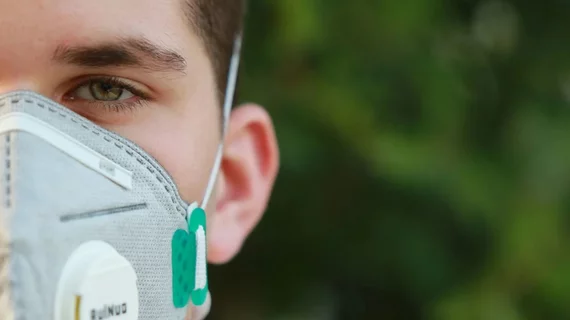Mask study finds one style actually increases transmission risk
Among 14 common types of protective face mask is one that may do more harm than good.
The suspect is the gaiter or neck fleece. That’s the style favored since well before the pandemic by runners, who like it for cooling in the summer and warmth in the cold seasons. It’s been widely repurposed as a way to comply with mask mandates brought on by the COVID-19 crisis.
At the other end of the spectrum is, unsurprisingly, a fitted N95.
And closer behind the fitted N95 than might be expected is the three-layer surgical mask.
The results are from a study conducted at Duke University in which Martin Fischer, PhD, and colleagues developed and tested a simple optical measurement.
As described in the team’s study report, published in Science Advances, the technique uncovers how many respiratory droplets make it through or around each mask type.
“Our measurement setup is inexpensive and can be built and operated by non-experts, allowing for rapid evaluation of mask performance during speech, sneezing or coughing,” the authors explain.
In their review of the study’s results, Fischer et al. theorize that the neck fleece may botch the job by breaking up large respiratory droplets into a fine mist of small droplets, increasing the total droplet count over that seen with no mask at all.
“Considering that smaller particles are airborne longer than large droplets (larger droplets sink faster), the use of such a mask might be counterproductive,” they write.
Meanwhile the valved N95 mask wasn’t as spectacular a failure, but it did perform relatively poorly compared with its kin. Its failing seemed to owe to its exhalation valve, which opens for strong outwards airflow, the authors note.
“While the valve does not compromise the protection of the wearer, it can decrease protection of persons surrounding the wearer,” they write. “In comparison, the performance of the fitted, non-valved N95 mask was far superior.”
In coverage of the study by the Boston Globe, Prof. Warren Warren, PhD, says the results suggest a simple rule of thumb: If you can blow through it and see through it in the light, it’s probably not a very good mask.
“What we’re really seeing is that most of the homemade solutions, if you fit them right so there aren’t big gaps, they do a pretty decent job, working just about as well as the disposable medical masks,” Warren tells reporter Martin Finucane.
The journal has posted the study in full for free.

